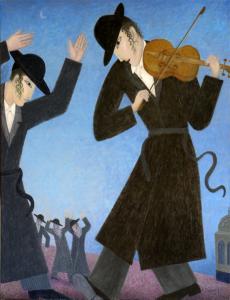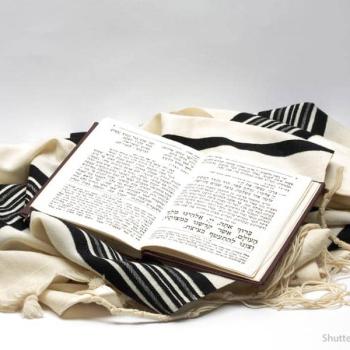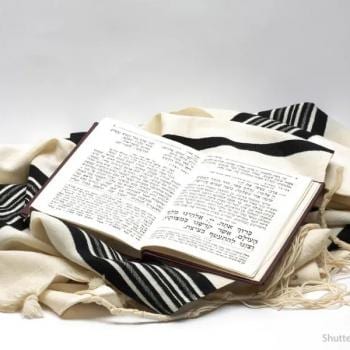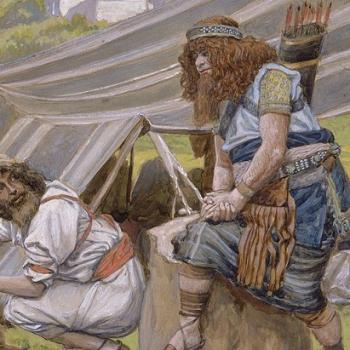On this Mother’s Day, men who have been blessed with a wonderful mother and/or wife should thank God and follow the Talmud’s advice: “Love your wife as you love yourself—and honor her even more”; and “Be careful to honor your wife: for blessing enters the home only because of your wife.”
For many people, Hassidic Jews are noticeable because of their Amish-like dress and ultra-orthodox behavior. But it is their unique stress on trusting in God and elevating one’s soul through joyful religious activities that makes them distinctive.
There are many ups and downs in the life of every person and every nation. How an individual or a community meets the challenges of life is strongly influenced by the mindset one has prior to the challenge. Reacting with despair, discouragement and helplessness reduces the chances of overcoming obstacles. Reacting with hope, faith and confidence increases the chances of a successful response.
Men who have a mother or wife with these optimistic characteristics are truly blessed as was Rabbi Israel, the Baal Shem Tov (1700-1760), the founder of Hassidism, who often stated after his wife died, “I thought I could rise to heaven in a whirlwind like Elijah, but now that I am only half a body, this is no longer possible.”
Once on the afternoon of the joyous holiday of Simhat Torah, the disciples of the Baal Shem Tov were at his home dancing and drinking. After several hours the Baal Shem Tov’s wife Hanah the Tzadekit (saint) said she was worried they would drink up all the wine in the cellar and there would be none left for the next day Shabbat blessing. Rabbi Israel, the Baal Shem Tov, told her that as usual she was correct, so she should go tell them to stop dancing and drinking.
Hanah the Tzadekit and the Shekinah

Jewish mystics taught that the Shekinah—”the female presence of God”—rests upon a husband when he makes love to his wife with a sense of reverence, tenderness, adoration and love. The Shabbat adds holiness to these feelings. The key attitude is a sense of wonder and gratefulness that your wife is God’s gift, the chosen source of your blessings, and a most wonderful manifestation of God’s presence in your life, as the Bible says, “Who can find a capable wife? Her value is far above jewels. Her husband can trust her completely.” (Proverbs 31:10)
It is time the spiritual importance of Hannah the Tzadekit to Rabbi Israel the Baal Shem Tov, and Hanah’s daughter Hodl the Tzadeket’s spiritual importance for her children and grandchildren, is recognized by all Jews, and especially Hassidic Jews. Hanah the Tzadekit had two children: a son, Tsevi Hirsh, who did not become prominent, and a daughter, Odl (Hodl), whose descendants include Rabbi Barukh ben Yeḥi’el of Mezhbizh, Rabbi Mosheh Hayim Efraim of Sudilkov and the very well-known Rabbi Naḥman of Bratslav, all of whom played significant roles in the later Hasidic movement.
Finding that Mensch
Hanah the Tzadekit, was first married to a young man who was highly recommended by her brother Rabbi Avraham Gershon, because he was very pious, and the best Talmud student of a very famous yeshivah. Yet this young Talmud prodigy turned out to be a harsh, narrow-minded, self-righteous, overly judgmental person who did not listen to or respect his wife. It soon became evident that he was a failure as a husband; and Reb Ephraim, Hanah’s father, paid him some money to divorce his daughter Hanah and leave town.
Now, Reb Ephraim of Brody told his daughter, he was determined to find for her an open minded, kind, positive and flexible mensch; who enjoyed encouraging people to worship God through joy and, most important, who respected women. Unfortunately, long time study in a yeshivah greatly developed intellectual faculties but did not usually stress the ‘mensch-like’ qualities, and Ephraim was determined to avoid making another mistake like his first one.
One day Ephraim met a young man, newly arrived in Brody from a nearby village, praying with great joy and enthusiasm. Ephraim talked for a long time to the young man, Israel ben Eliezer, who he had encountered in the synagogue, and learned that Israel ben Eliezer was truly an open-minded, kind, positive and flexible mensch; one who enjoyed helping and encouraging people, and who respected women.
This was the kind of man Reb Ephraim wanted for his daughter Hanah the Tzadekit.
Becoming a Ba’al Shem Tov
As a young man, Israel ben Eliezer apparently worked at a variety of jobs, including ritual slaughterer, elementary school teacher, and circumciser. He had learned rabbinic Hebrew and Aramaic and, though not a Talmudist, had become conversant with rabbinic literature.
He also set himself to learning both practical and contemplative Kabbalah from such mystical, ascetic types as Rabbi Mosheh of Kitev. At the same time, he started learning about herbal remedies, even from non-Jews.
Sometime in the 1730s, Hanah the Tzadekit urged her husband, Israel ben Eliezer, to begin calling himself a Ba’al Shem or a Ba’al Shem Tov; interchangeable terms meaning that he was a “master of God’s name,” which he could use for healing and other purposes.
The Ba’al Shem Tov, in its abbreviated form, Besht, soon became the title, and even the name, used by most people who knew of him. The Besht was at first best known for his skills as a healer; one Polish source even refers to him as a Ba’al Shem doctor.
Soon the Besht was known as a figure who could mediate between this world and the divine spheres in an effort to help people solve not only their health, but also their financial and social problems. The Besht always had a warm personality, a sense of humor, and a clever intellect.
The Besht’s wife Hanah the Tzadekit, constantly increased his self-confidence, and the conviction that he had a key role to play as a leader of the people of Israel, working for their redemption and that of the Shekhinah (the divine presence).
The Besht began to attract disciples in the 1740’s. Many of these men were Rabbis or Yeshivah students who were discontented with the cold, arid, ridged intellectual atmosphere of most Yeshivot.
Not Ascetism or Study, but Joyful Prayer
The Besht’s attraction to the disgruntled Yeshivah Jews, and even to those already studying Kabbalah theory, was that he had instituted many innovations within traditional, mystical, ascetic Hasidism.
These reforms paved the way for its transformation, primarily following his death, from an elitist asceticism to a popular spiritualism, and even more important, from a collection of small religious fellowships to a mass movement that would revitalize Orthodox Jewish life.
Perhaps most important among these innovations was his insistence that the path to communion with God lay not in acts of asceticism or studying Talmud all day; but in the joy of emotional prayer. If prayer was the key element of sacred activity, then intellectual study was not required. Learning and wisdom could better be achieved through listening to tales of miraculous events.
It was from Hanah the Tzadekit that the Besht learned the lesson that was also taught later by Rabbi Zusya of Hanipol, who said, “My mother Mirl did not pray from a book because she [unlike Hanah the Tzadekit] could not read. All she knew was how to say the various blessings. But wherever she was when she said the morning blessings, that place radiated God’s presence the whole day.”
Allen S. Maller is an ordained Reform Rabbi who retired in 2006 after 39 years as the Rabbi of Temple Akiba in Culver City, California. His web site is: www.rabbimaller.com. Rabbi Maller blogs in the Times of Israel. His most recent books are “Judaism and Islam as Synergistic Monotheisms’ and “Which Religion Is Right For You?: A 21st Century Kuzari” both available on Amazon.













